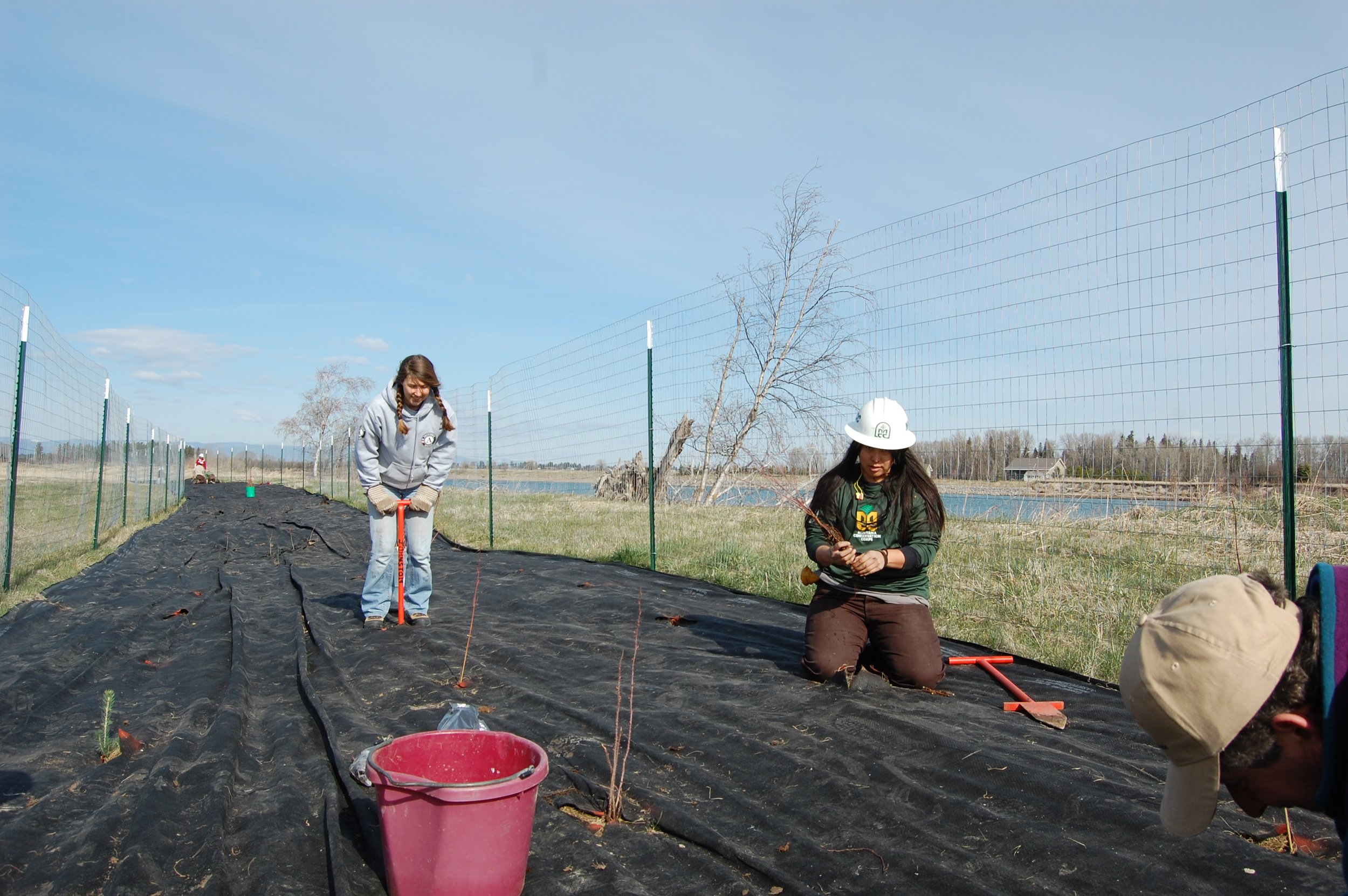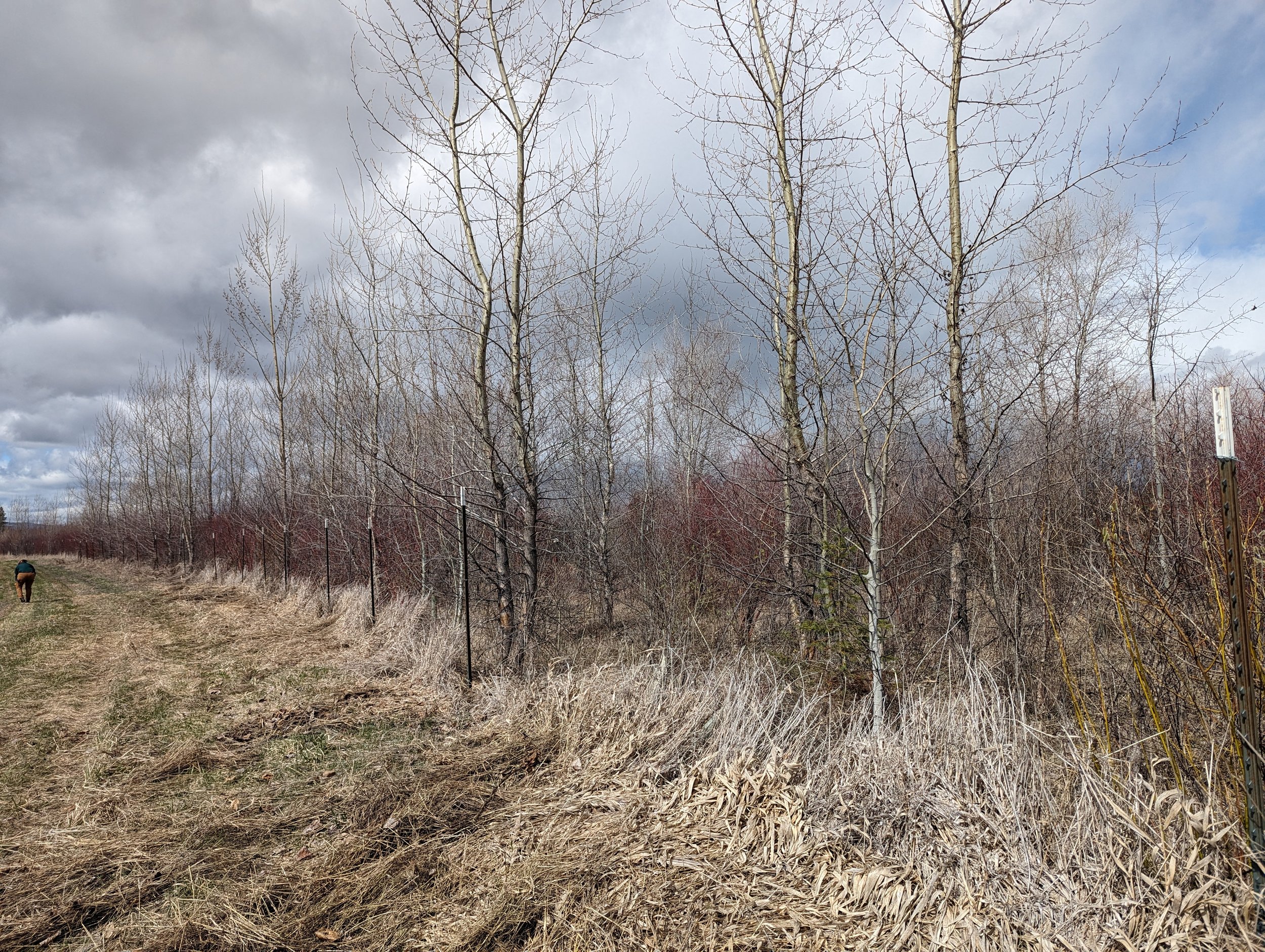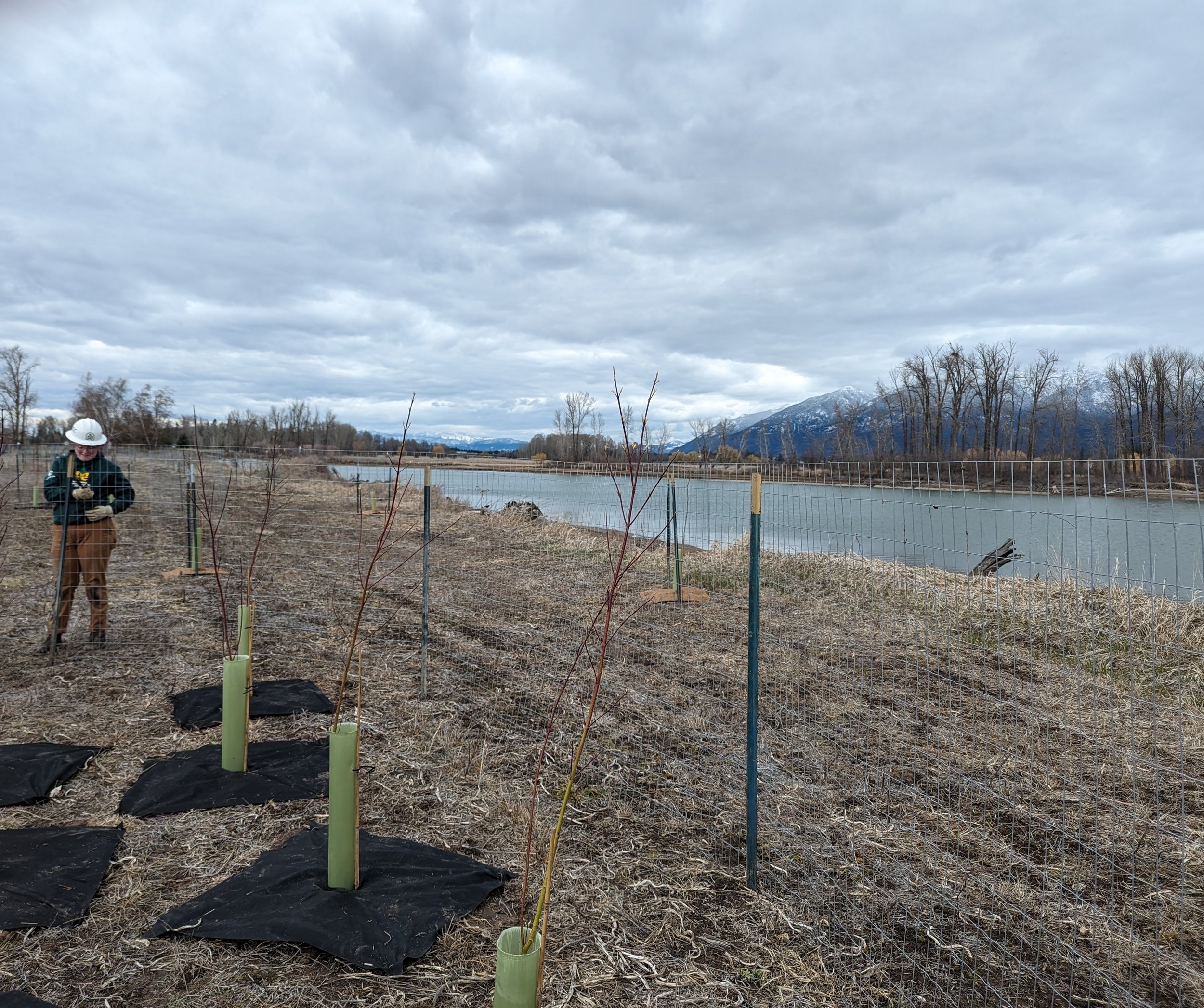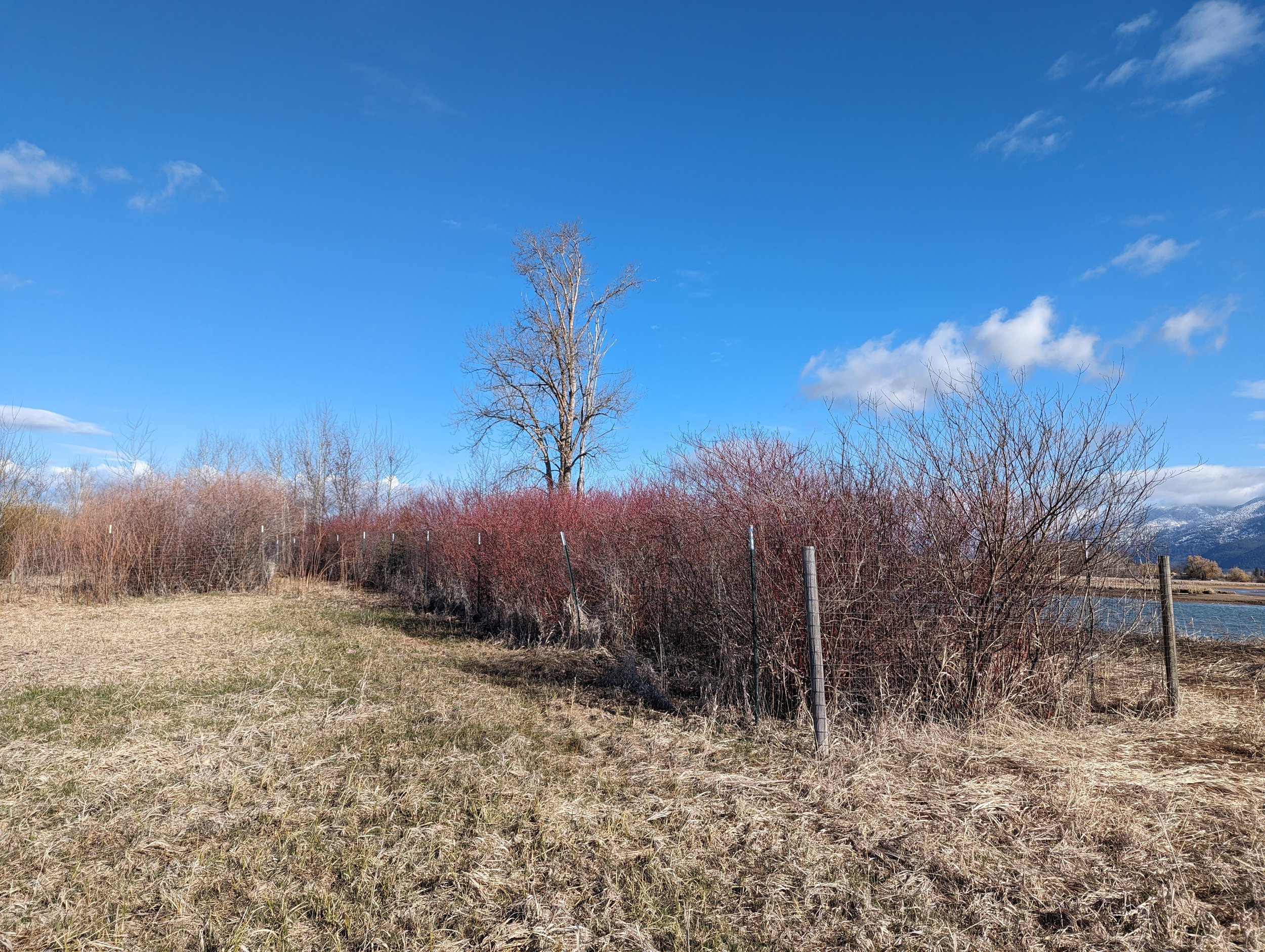Updates on Riparian Restoration Efforts in the Flathead Valley
The River Steward Program helps landowners improve and restore riparian buffers along degraded streams and rivers in the Flathead Valley.
This April, Flathead Lakers staff, volunteers, and a MT Conservation Corps Crew helped Montana Fish, Wildlife and Parks (FWP) maintain two riparian restoration projects across Flathead waterways.
Diamond B. Ranch Restoration
Over a decade ago, Diamond B. Ranch landowners made a significant conservation commitment by halting farming activities along the water's edge. Flathead River Steward worked with current and past landowners to plant native trees and shrubs, essential for sustaining water quality in the river. Protected by a conservation easement held by the Flathead Land Trust since 2011, the 192-acre farm helps protect both important farm soils and fish and wildlife habitat. This year, the focus shifted toward the final bare section of the Flathead River at Diamond B. Ranch. Alongside the planting of native trees, efforts started to dismantle fences surrounding older trees and shrubs, no longer requiring protection from deer browsing. We are incredibly grateful to FWP for their leadership and funding support.
Ashley Creek Restoration
Inspired by a presentation highlighting the vital role riparian buffers play in sustaining clean water, former board member Richard Siderius spearheaded a restoration project along half a mile of waterfront on Ashley Creek. With financial backing from a grant secured by the Lakers from the MT Department of Environmental Quality and support from the Flathead Conservation District, River Steward partners installed a watering access area and a wildlife-friendly fence to restrict cattle access to the creek. Within a year, dense grasses swiftly reclaimed the creek's banks, fortifying them against erosion. Over the years, collaborative efforts involving MT Fish Wildlife and Parks, partners, and Flathead Valley Community College volunteers, have seen the planting of native shrubs and trees, further enriching the restoration effort. This year, as the project nears its tenth anniversary, MT Fish Wildlife and Parks, alongside Lakers staff and volunteers, have started removing tree cages and tree tubes, which are no longer needed.
"While removing fences is the least glamorous and most tedious part of any project, it is beautiful to see the project mature, with a healthy and expanding riparian buffer protecting the river," wrote Constanza von der Pahlen, the Lakers' Critical Lands Program Director.





